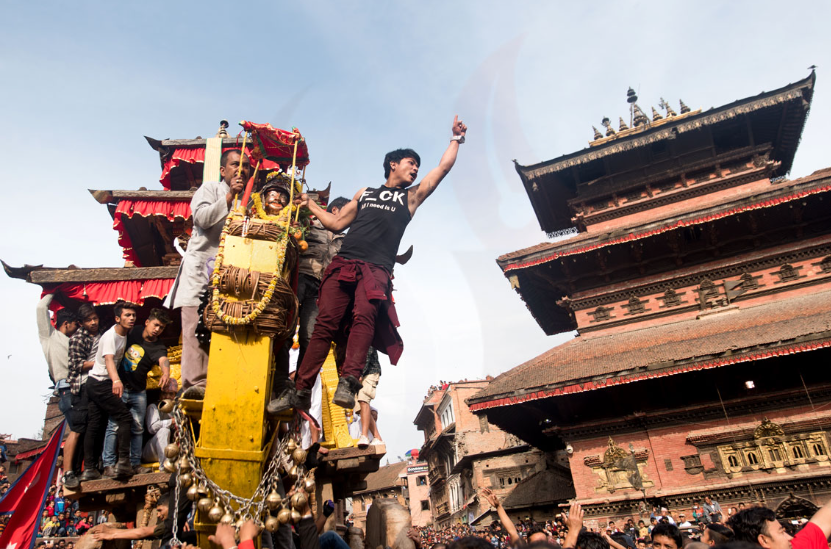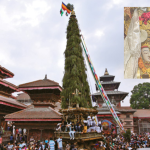Bisket Jatra, a grand festival cherished by the Newari community, holds a special place in the heart of Bhaktapur, the ancient city renowned for its devotion, temples, and vibrant cultural tapestry. While the city pulsates with numerous festivities throughout the year, Bisket Jatra stands apart, captivating multitudes with its unique allure. It has become synonymous with the essence of traditional celebrations in the region, earning it the distinction of being one of Nepal’s most esteemed and enduring Jatras, especially revered in Bhaktapur, Dhapasi, Thimi, and Tokha.
Also known as Biska Jatra, this monumental outdoor extravaganza unfolds amidst the cobblestone streets and age-old structures of Bhaktapur. While many recognize it as Bisket Jatra, the local Newars affectionately refer to it as Biska Jatra. Additionally, it carries the epithet “Bisya Jatra,” denoting the symbolic slaying of a colossal serpent (“Bi” representing a giant snake, and “sya” signifying to kill). Though it coincides with the advent of the Nepali New Year, its origins are independent of the calendar, spanning nine days and eight nights, making it one of Nepal’s most protracted and vibrant celebrations. The epicenter of the festivities pulsates around Bhaktapur Durbar Square, Taumadi Square, and Balkumari Thimi.
The festival’s hallmark attractions include towering wooden poles, ceremonial lingos (yoh si dyo), ornate three-story chariots (raths) dedicated to Bhairavnath and Bhadrakali, spirited tug-of-war contests between rival communities, and the awe-inspiring bode tongue-piercing ritual, where devotees traverse the city with illuminated bamboo racks while sporting pierced tongues. Additionally, on this auspicious occasion, children, irrespective of age, express reverence and gratitude to their mothers through heartfelt offerings of sweets, fruits, and tokens of appreciation.
The festivities commence with fervent locals ceremoniously hauling the chariots of Bhairavnath and Bhadrakali through Taumadi Square, adorning them in a spectacle known as Bhaila kha and Nakinju kha. Beginning four days prior to the Nepalese New Year and continuing four days after, the festival reaches its zenith as massive wooden poles are erected across Bhaktapur. Steeped in tradition, the celebration features a kaleidoscope of dances, cultural performances, and melodic strains of traditional musical instruments like dhema, dha, and flute, showcasing the rich heritage of the region.
Legend traces the roots of Bisket Jatra back to the Licchavi era under the reign of King Jagat Jyoti Malla, whose legacy of art and craftsmanship still adorns Bhaktapur’s medieval landscape. Among the myths surrounding the festival, one narrates the tale of a princess cursed to widowhood until a prince with mystical prowess vanquished the serpentine menace, leading to the dawn of Bisket Jatra as a celebration of triumph over adversity. This venerable tradition is believed to have endured since the 12th century.
Bisket Jatra stands as a vibrant testament to Nepal’s cultural heritage, attracting visitors from far and wide. However, due to the inherent risks involved, it’s imperative for attendees to exercise caution, travel with guides, and refrain from approaching chariots and wooden poles. Engaging in the tug-of-war is strongly discouraged due to its perilous nature.
Learn about Seto machindranath Jatra: Seto Machindranath of Kathmandu



